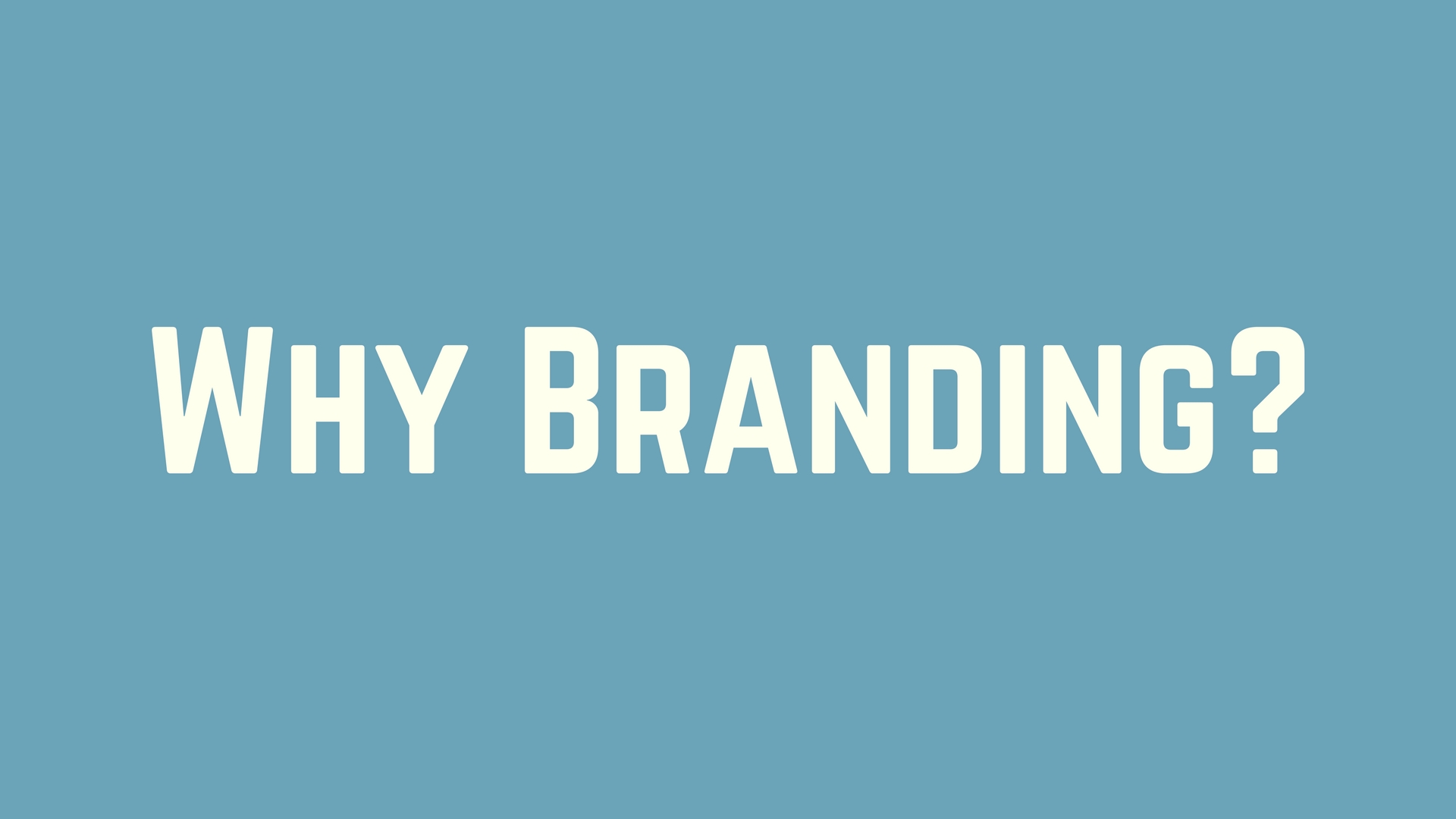Brains Behind the Brands with Brittany Scott, Creative Director
We’re excited to introduce a new Brand Salsa series, “Brains Behind the Brands,” In each edition of the series, we will be shining the spotlight on one of our brand experts and getting their thoughts on a range of topics, from new trends in the branding industry to advice they’d give someone working on building their brand.
Our first expert is Brittany Scott, Addison Whitney’s Creative Director. Brittany has extensive experience creating brands, specifically on the verbal branding side of the process. Below, we get a look inside the brain behind the brands:
When thinking of creative cues for a new name, where should organizations or products go for inspiration?
Companies tend to be laser focused only on their products and their competitors. While it is valuable to know your audience, one of the most inspiring exercises can be looking outside of your industry and observing what other brands are doing.
For example, if you are naming a sports car, don’t just focus on what’s happening within automotive naming, but expand out to other industries that may have similar audiences. For a sports car, you may find parallels in extreme sports, energy drinks, or luxury accessories. Use these observations to broaden your thinking and explore new ideas.
How can brands ensure that their corporate identity name will be built to last?
Changing a corporate identity can be a lengthy and costly process. To make your brand last as long as possible (and maintain all that equity you will soon build!), be sure your name is flexible enough to adapt to future growth. Starting a company with a name that is too limiting (ex: too descriptive of one product or service) may set you up for a name change in one, five or 10 years when you’ve expanded your offerings beyond this initial description.
This is why many companies use aspirational concepts instead of descriptive or functional ones. They try to convey the benefits they will deliver to their customers in the future. By envisioning results rather than products, you can create a name that extends and grows with your business.
Can you describe the feeling of seeing a name you created hit the market?
It’s always fun to see a product that we’ve named hit the shelves. Some products are easy to see and buy (for example, consumer goods like soft drinks or snacks). Others are harder to track down (like pharmaceuticals or technology offerings) but still equally exciting for my team when they launch.
At Addison Whitney, we have a whole display at the office of products we’ve named (the smaller ones - unfortunately we can’t fit cars and appliances in there!).
What do you see as the “next big thing” in naming – either in the pharmaceutical industry or consumer market?
The biggest trend in pharmaceutical naming right now is simplicity. Physicians and consumers are overwhelmed with complex names with too many weird letter combinations. Even brands designed as “empty vessels” (names not built around a real word or concept) are becoming increasingly easier to say and spell. While the pharmaceutical market is still very crowded and we have to use caution to ensure safe prescribing, we hope to continue to work towards simpler, more sophisticated names that appeal to all target audiences.
For consumer products, I am loving the trend towards what I’ll call “clever functional.” Similar to pharmaceuticals, consumers want simple, telegraphic names that are easy to remember. But consumers also aren’t stupid. So savvy companies are creating descriptive names with a twist. One of my favorite new product names is “Innovasian Cuisine.” It’s easy to understand and broad enough to encompass a growing product line. It makes me smile and is fun to say. I am also a fan of the brand name “Seeds of Change.” There are so many layers of meaning to this one, it really piques my interest and I think it appeals to consumers on an intellectual as well as emotional level. And let’s not forget about “Sweetos,” the new cinnamon sugar version of Cheetos. How perfect is this name?!? It’s an obvious extension of the Cheetos brand, but with a clever twist that functionally aligns to the product.
How important is it to take URL availability into account when creating a name?
Everyone wants to own the .com for their business. And for the right amount of money, many URLs are available for purchase. However, with the increasing ease of search and the increasing impatience of users, less and less people are typing in “www.YourName.com” to go to your site. Most are using a search feature to find information, so I think it’s better to focus your efforts on SEO (search engine optimization) than worry about your URL.
Don’t let URL availability deter you! If a single word URL is not available, adding a descriptive word or phrase is perfectly acceptable (Premier Hospital Solutions could be www.premierhospitalsolutions.com instead of just www.premier.com). And if you are naming a product or service, consider whether it even makes sense for it to have a standalone URL. Many products can nest under the master brand’s website, making it faster and easier for users to find them.
What to learn more about how you can build your brand? Let's talk.
Teaching an Old Dog New Tricks – Why Branding Isn’t Just for New Businesses
When starting a new company, building your brand should be at the top of your to-do list. Having a strong brand in your arsenal is crucial to starting at the bottom and moving up the ladder. These new organizations seemingly live at the forefront of the brand development landscape, driving new best practices and rolling out new techniques all the time.
But just because you’re an older organization that came to fruition before strategic brand building was commonplace doesn’t mean you’ve missed the boat. If your brand needs a refresh or a restart, don’t feel as if the latest and greatest branding techniques are only left to the upstarts and newcomers.
There’s no better time than the present to begin engage the appropriate parties and begin the process to bring your brand up to speed with your competition and maximize its ability to drive success.
Without going into too much detail on the brand development process, let’s explore three reasons why branding is important for the established organizations in the business world.
Brand? What’s a brand?
The first reason is that you may not actually have a “brand” in position for your organization. There are a number of reasons why this may be the case, but it’s quite possible your organization has been riding on the success of a particular product or two, making the strength of your organizational brand minimal.
But just because you’ve had success before doesn’t mean you can’t set yourself up for even more success in the future. Diving into building a strategic brand will almost assuredly answer questions you never even thought to ask and take your organizations you never thought you could go. It could be as simple as creating a visual brand that drives a new website design or, for the first time, defining who your target audience is and identifying how to best position your brand for them. No matter what, taking that leap will open new doors for your organization and give you a part of it that will work for you.
No matter when you started the game, everyone is still playing on the same field.
Having an established history and a long list of accomplishments are two things that every business would love to have. But in the day-to-day reality of the marketplace, the memory of today’s consumers can be short, often negating much of the historical advantage of an older brand. What matters is more of right in front of them in that moment – when brands are judged by “what have you done for me lately” and “what do I think of you right now.”
This “right now” mentality puts a heavy emphasis on ensuring that your brand, no matter its age, speaks to consumers as you’d like it to, getting your key differentiation messaging across right away. From names that make sense and connected directly to what your organization offers to logos and visual branding aspects that are aesthetically pleasing and in line with current trends, your brand needs to bring itself up-to-date.
What made sense before may not make sense today.
One of the biggest reasons why organizations are in need of an updated brand is that they’ve simply outgrown the old one, if they even had a “brand” to begin with. When your organization began, maybe you offered two main products, which dominated everything about who you were – your name only spoke to those two, your logo featured them both prominently, your target audience was the market for those two – but now, you’re leaving a lot on the table.
The best brand refreshes and rebrands are able to toe the line between old and new, artfully connecting what made the brand great before with what makes it great today. This is especially true for organizations whose newer offerings are now the star – when they weren’t acknowledged in the brand elements, too much weight was put on them succeeding on their own. They were lone wolves out on the market – quite possibly, the majority of their audience had no idea there was a connection between that product and your brand. So bring them in from the cold and let them bask in the warmth of the overall brand’s strength.
Has your company recently experienced change or growth? Due to changes in business strategies, acquisitions, internal organizational changes or the addition of new products to a portfolio, your brand strategy may need to evolve over time. Click here to download your free copy of “Your Brand’s Guide to Corporate Change” today, and learn how to align your brand and business strategy for success!
How We Answer the Question: "Why Branding?"
I was recently looking through AddisonWhitney.com, and when one of the sliding boxes popped up, what it included caught my eye, talking about who Addison Whitney is and what we do:
“…Helping companies envision their futures – through design, naming, research & brand strategy.”
This phrase stood out to me – and not just because it came from the AW site. The concept of a brand helping to shape a company’s future, along with its ability to put into motion the future they envision, shows the true impact of branding and brand development and drives the case to developing a strong brand.
It’s a question we hear all of the time – “why do I need to create a brand? Why branding?”
To me, the best way to answer this question is with a new question “What is branding?”
Branding is... a researched, thought-out, creative name, one that encapsulates the essence of the brand in verbal form. It’s a name that speaks to the consumer and lets them into what the brand is about while also finding a place in their memory and in their willingness to speak it to others.
Branding is... a logo that jumps out from the competition, and is created with the due diligence required to work on whatever platform it sits. It’s a color palette that keeps your visual brand interesting while also keeping it consistent, building brand equity as consumers walk by and drawing them in with its aesthetically pleasing look.
Branding is... the research behind the decisions made throughout the process. Nothing great is created in a vacuum, and that includes brands. It’s speaking to your target audience to discover that a name candidate you thought would be a home run actually needs some refinement before it can reach its true potential, and finding out what the consumer wants your brand voice to say in order to make the emotional connection necessary to build brand ambassadors.
Branding is... the strategy decisions that drive these elements, creating the road map that will get the brand from nothing to something great. It’s the identification of the target audience, the analysis of the competitive landscape, the positioning and architecture of the brand name and any upcoming brand additions, the brand guidelines that are built to ensure that every usage and interaction of your brand is consistent and powerful.
These reasons, these aspects of branding are why its strong development is so important. Creating and growing any business is a process that can take large amounts of time and energy to achieve – that’s a given. So why not spend some of that time and energy to create something that will work for you even after it is launched?
So go ahead, envision your future. Envision the future you want your company to have – where you want it go and the success you want it to achieve. Then look at it through the lens of what a strong brand can provide. If you do this, then “why branding?” becomes an easy question to answer.
Has your company recently experienced change or growth? Due to changes in business strategies, acquisitions, internal organizational changes or the addition of new products to a portfolio, your brand strategy may need to evolve over time. Click here to download your free copy of “Your Brand’s Guide to Corporate Change” today, and learn how to align your brand and business strategy for success!
March Madness: When Even the Floor is Branded
This week, 68 teams from around the country will take the floor to battle for a national championship in the NCAA Men’s Basketball Tournament. “March Madness” as it’s known to millions of fans (some more casual than others), is one of the biggest sporting events in the country each year. And as any branding expert will tell you, that much attention brings an even bigger need for a strong branding production.
We’ve covered how the tournament can help the brand efforts of smaller schools who make a strong appearance, and the brand strength of the term “March Madness” is well-known, but the branding of this event literally and truly starts from the ground up.
The NCAA, although classified as a non-profit organization, knows the monetary value of all of those sets of eyes on their event from start to finish, with every game of the tournament broadcast on television and millions of brackets filled out, causing even more attention to be paid to even the earliest games.
They also know not to pass up a chance to brand every element of the tournament, from the “First Four” games where eight teams battle in Dayton, Ohio in what essentially count as play-in games to the main tournament, all the way to the NCAA logo sewn into every jersey of every player on every team participating.
What to learn more about how you can build your brand? Let's talk.
But there’s one branded element that may hold the title as the most watched and most overlooked branding of the entire event – the actual floors on which the games are played.
Yes, March Madness branding is so all-encompassing that even the very playing surfaces are incorporated into the overall brand profile and given a high level of attention to ensure they are both brand compliant but also provide their own unique addition to the visual branding.
The branding of the floor starts with at the middle, where each court is anchored by the logo of March Madness, stretching across almost from three-point-line to three-point-line and serving as the eye-catching visual branding element of the court.
Here's a sneak peek at what the #MarchMadness courts will look like this year! pic.twitter.com/CxAIAs4ALL
— NCAA March Madness (@marchmadness) March 2, 2017
Then, along the edge of the court, along the one baseline and both sidelines, the basic information is provided – where the game is being played, what round it is, and who is the host team/conference. The tournament tagline, “The Road to the Final Four” stretches across the other baseline, joining the halfcourt logo as the consistent brand aspect across each location.
Now, some have clamored for the return to the old way of doing things, where the floor of each venue stayed the same as it was the entire season for whomever played there, providing a kaleidoscope of colors, logos, designs and wood finishes whenever you switched from game to game. The only sign that you were watching a Tournament game was the NCAA logo decal placed somewhere on the court.
While it may have made things more visually interesting, the NCAA knew that it was the very opposite of what they needed to do to strengthen the brand. March Madness is one of their most prized events, one that brings in enough money and attention to drive the majority of the association’s work. And when you have an asset this strong, you do everything you can to tie it back to you.
Today, with the similar-but-not-identical designs and the focus on key elements of the overall March Madness and NCAA brands at the forefront, each court serves its purpose as both informational and branded – oh yea, it also is counted on to host the actual games.
Becoming a Tradition-Synonymous Brand
In 1924, employees of the Macy’s department store, looking for a way to celebrate Thanksgiving, marched down 34th Street in New York City dressed in vibrant costumes, with floats, bands and live animals. This began an annual tradition that today is watched by over 44 million people each Thanksgiving morning and stands as the second-oldest Thanksgiving Day parade in the country.
For years, this was my only exposure to the Macy’s brand. Although I grew up in an area with no Macy’s locations nearby, it was one of the most well-known brands of my childhood, an achievement attributed solely to its name gracing the parade that played on the television every Thanksgiving morning.
I doubt I’m the only person who has that same story and brand connection – which, if you think about it, is quite a feat for a three-hour event that comes once a year.
Outside of fireworks shows and cookouts by the pool, to many Americans, the 4th of July means the Nathan’s Famous Hot Dog Eating Contest. Thousands of attendees and millions of television viewers tune in for the Independence Day tradition, spearheaded by a brand with little equity outside of its native Northeast, but which is now synonymous with the holiday and the event.
These are just two examples of how a brand has attached itself and eventually become synonymous with a holiday tradition. They’ve reached outside of their usual consumer audience and established brand equity with a portion of the marketplace with little to no brand knowledge outside of the name association.
In doing so, they did something no advertising or marketing campaign could do – they became connected to tradition.
Consumers love tradition. They love familiarity, regularity and nostalgia. Traditions bring out strong, deep, ingrained emotions within an individual, and to hitch your brand to this is to elevate it to this level.
In doing so, you provide a shortcut to the summit of the brand equity mountain – creating an emotional connection between the consumer and your brand. Once established, you have put your brand ahead of the pack within your space, as consumers who are unsure of the specifics of each brand within a category will ultimately choose the one they are either more aware of or have an emotional connection with.
For the most part, success in sales figures and choices from consumers across brands is even when it comes to core consumers and those who have strong brand loyalty. The difference between being at the top of your space and falling behind comes in pulling in the “unaffiliated” consumers – those with no preconceived loyalty to a specific brand, whose purchasing choices come from other factors, such as price, quality and, particularly important to this topic, brand familiarity.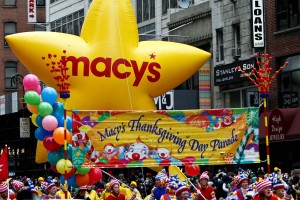
Back to the Macy’s example. They are the crème de la crème of tradition-synonymous brands, not only because their name is attached to an event on a holiday that itself is synonymous with nostalgia, but also because watching the parade has become second nature to many families on Thanksgiving, who refer to it not as just a “Thanksgiving Parade” but as the “Macy’s Thanksgiving Parade” or even just the “Macy’s Parade.”
As such, if these same consumers were at a mall with their choice of department stores to enter, and had no prior knowledge of the ins and outs of the store brands available, odds are very good that they would tap into their emotional brand connection and choose Macy’s.
In the department store space, the majority of the brands are on equal footing. Their pricing is very similar, the products they carry don’t vary widely from brand to brand, and they all have sizeable presences in the consumer marketplace.
So how can Macy’s separate itself and drive consumers into the store and into the purchasing mindset? By being connected. It doesn’t hurt that the very thing they are connected with sits at the start of the biggest shopping time of the year – when the masses hit the stores at 3 a.m. on Black Friday, the images of the Macy’s parade are still fresh in their sleep-deprived minds.
Such is the goal for brands looking to find their tradition match – expand the brand, connect with consumers and become permanently attached to the event or holiday.
Oh The Places Your Logo Will Go: Unexpected Mediums that Must be Considered in Visual Branding
When working through the visual branding process, especially in logo design, there are a few obvious places the logo will need to be displayed, such as office signage, business cards and websites/social media platforms. But it’s not enough to simply perform in the usual logo locations - in today’s increasingly diverse mediums in which logos will be deployed, logos must perform as they are needed, no matter the new and unexpected places they might be found.
The impacts of this shift can be seen in recent design trends, including the rise of “modernized” logo designs, which de-emphasize intricate details in favor of simplified, smoother logos. These new looks carry a value in their ability to be easily replicated across various platforms and sizes. Other design trends, including wordless, icon-only logos and the development of animated versions of a logo, also carry a valuable nimbleness that translates across mediums.
 Those overseeing these visual brand developments should be wary of committing a total focus to these logo applications at the expense of the overall visual brand experience. It can be easy to slip into the opposite mindset, putting so much focus on ensuring the logo looks great when scaled down to a website icon-sized replica that when scaled up and applied to the usual areas, the overall look is compromised. It is a fine line between a logo that is solid on all ends of the size spectrum and a logo that excels in one but lacks in another.
Those overseeing these visual brand developments should be wary of committing a total focus to these logo applications at the expense of the overall visual brand experience. It can be easy to slip into the opposite mindset, putting so much focus on ensuring the logo looks great when scaled down to a website icon-sized replica that when scaled up and applied to the usual areas, the overall look is compromised. It is a fine line between a logo that is solid on all ends of the size spectrum and a logo that excels in one but lacks in another.
This isn’t to say that the strategy should be one logo only, no changes, no variations, no matter what. In this case, consistency leans more along the lines of keeping key elements the same, but allowing for leeway in full usage or secondary marks. Many of the most successful visual brands have secondary or alternate logos, most of which are made specifically for a type of application. For instance, if a logo is mostly vertical but is going to be applied to a horizontal-focused medium, it would be time for a variation that still holds onto some essential brand elements but doesn’t compromise in quality.
More places to have a logo means more opportunities to get your brand in front of consumers to build brand equity. But if the consumer can’t easily connect the smaller or alternate logo back to your overall brand, you are missing out. As such, design with key brand elements in mind. Do you have a dominant color scheme, like the UPS brown, or a unique shape, like the
McDonald’s arches? Put these at the forefront of your design. That way, no matter what version, size or application a consumer sees your logo in, there will be an inherent ease in connecting it back to your overall brand.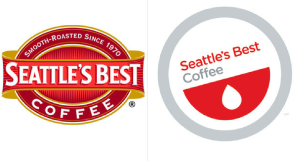
A bonus piece of advice when working on this type of logo design - strong brands in general all possess these standout elements, so if you’re struggling to identify which should be the driver in your logo design, it may be time to go back and look at your brand development strategy.
Visual branding will be somewhat driven by the evolving and ever-advancing ways in which we consume our brands, and as such, the cornerstone of the visual brand development – the logo – will be will be required to follow suit. These strategies and best practices will help ensure that your logo works for your brand as well as possible, no matter what platform it is given.
Has your company recently experienced change or growth? Due to changes in business strategies, acquisitions, internal organizational changes or the addition of new products to a portfolio, your brand strategy may need to evolve over time. Click here to download your free copy of “Your Brand’s Guide to Corporate Change” today, and learn how to align your brand and business strategy for success!
AW in Review - Addison Whitney Brand Salsa Recap 10.21.16
Welcome to our almost-Halloween edition of the AW in Review, our roundup of our latest brand salsa and Addison Whitney news and posts!
Don’t forget, you can stay up-to-date with everything from Addison Whitney by joining the conversation with us on our social media channels – Twitter, Facebook, LinkedIn and Google+.
Why You Should Keep The Focus In Your Brand Development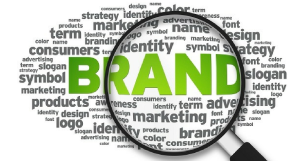
When it comes to brand building, this constant starting over and relying on chance-based efforts take up time and money, two crucial components to successfully build and create a brand.
On the contrary, a focused, targeted and well-strategized brand building campaign will yield results at a much higher rate, and will provide the necessary data of what works and what doesn’t works to help build the road map moving forward. Read More...
Age Is Just A Number: 5 Ways Established Brands Can Stay Young
There are few things worse for a company’s image than to be seen as one that believes they can connect with today’s consumers, despite overwhelming evidence to the contrary.
So how do you ensure that your brand takes the right path to stay relevant and modern? Here are five ways that established brands can prove that age is just a number. Read More...
The Big Transition: What To Do With Your Brand Following A Merger Or Acquisition
Far too often a brand strategy is overlooked in the M&A process, or brought to the table too late to have an impact in anything except final implementation. Whenever it happens, it is important to develop a communication plan that addresses both internal and external audiences.
This plan should break down the individual audiences in detail and outline what they should know and when, including the appropriate verbal and visual brand implementation for each instance. Read More...
Iconic Logo Timeline Shows There’s No One Way To Evolve
Logo evolution is a natural part of the branding process. In fact, the evolution of the overall brand is common, and often necessary, in order to keep up with the latest advancements in the marketplace and ever-changing consumer mindset.
But how a logo “should” evolve is still up for debate. Read More...
How To Use Brand Positioning To Start Your Brand Development
That is why creating a strong positioning statement is such an important starting point.
It will lay out some of the key aspects of the brand building process, pointing out the end goal, the basic characteristics or big idea, and some of the steps to get the brand to the top. Read More...
Age is Just a Number: 5 Ways Established Brands Can Stay Young
There are few things worse for a company’s image than to be seen as one that believes they can connect with today’s consumers, despite overwhelming evidence to the contrary. Misguided efforts to force their out-of-touch branding onto current audiences can come off as forced and counter-productive.
But on the other end of the spectrum, when these established brands, made up of some of the oldest and longest-lasting brands on the market, are successfully able to connect with the wants and needs of today’s consumers, they can reinvigorate the brand, potentially introducing it to an entirely new audience.
So how do you ensure that your brand falls in the latter category? Here are five ways that established brands can prove that age is just a number:
- Keep your ear to the ground
One of the most common missteps when a brand is unsuccessful in updating their brand image is that their strategic direction has no connection with current best practices. This inward-only focus ignores what is seeing the best results in the marketplace, which often leads to messaging that falls flat. Instead, brands should identify the reasons behind the successes, and work to incorporate these strategies and tactics in ways that align with their larger goals.
- Don’t run from your past
The long lifespans of these established brands aren’t by accident; there must be something about the brand that has driven consumers to continue their connection and keep it afloat over the years. This is not something that is easily attained, and as such, it should not be brushed aside, even when looking to modernize the brand. The brand equity possessed by these brands can give a head start to new strategies and campaigns by providing built-in consumer awareness and providing the benefit of the doubt for future moves. This is partly because of the power of nostalgia in branding, and also because of the gravitas given to brands with proven track records.
- But do accept that it is in the past
However, there is a difference between leveraging the past as an advantage and steadfastly clinging to it no matter what. As the saying goes, it’s important to put the past behind you. Those brands who are firmly planted in the “out of touch” category almost always are victims of an inability to move forward. The mindset of “well it’s worked in the past, it will always work” and an unwillingness to evolve is something all brands, not just those with long histories, should avoid.
- Keep everything in perspective
Decisions made with an eye solely on the short-term at the expense of sustained, long-lasting achievements will often start out strong then fade quickly, leaving the brand scrambling to revise their strategy to keep up. For instance, an updated logo may be a good strategic move for the brand, but should not be paired with a total name change, effectively doing away with two crucial brand elements that lead the way in customer recognition. If your brand is looking to update, work toward achieving a balance between immediate results and long-term sustainability. Also, don’t change your brand so much that it becomes unrecognizable, rendering the “established” of “established brand” moot.
- Where you say it is as important as what you say
When looking to use social media to communication a brand’s message, the adage of trying to be everything to everybody leading to being nothing to nobody rings true in this aspect. When choosing the message outlets, brands would be wise to carefully examine each platform’s audience, message format and viewing trends to establish the correct ones to pursue. For example, if your brand is very visually strong and has outstanding brand imagery, a platform like LinkedIn would be lower on the list in favor of visually-driven sites like Instagram and Facebook.
As your brand ages, these five steps will help ensure that it ages gracefully, and possibly, gives a new lease on life to the brand’s successful lineage.
Has your company recently experienced change or growth? Due to changes in business strategies, acquisitions, internal organizational changes or the addition of new products to a portfolio, your brand strategy may need to evolve over time. Click here to download your free copy of “Your Brand’s Guide to Corporate Change” today, and learn how to align your brand and business strategy for success!
The Big Transition: What to Do with Your Brand Following a Merger or Acquisition
Whether your company is in the throes of a merger, acquisition or a corporate restructuring, how your brand presents itself through the transition could make a big impact on both customers and employees.
We all know change is hard. Consider that many of your employees may identify with where they are today, and need to be brought on the journey to understand both why it is happening and what the change means for them. And your customers similarly need to know why your change is going to improve their outcome, or why else would you subject them to it and risk losing their business?
Far too often a brand strategy is overlooked in the M&A process, or brought to the table too late to have an impact in anything except final implementation. Whenever it happens, it is important to develop a communication plan that addresses both internal and external audiences. This plan should break down the individual audiences in detail and outline what they should know and when, including the appropriate verbal and visual brand implementation for each instance.
Verbal brand communication encompasses not just what the (new) name is but the vision and positioning (or the reason behind the brand change). Change of this scale can create a moment in time when all eyes are upon you, therefore providing a great opportunity to tell your brand story.
Often this workload is shouldered by a brand manager who is also juggling other full-time responsibilities. An agency or contract resource can help keep your plan on track and address new challenges as they surface, and they most always do.
 You can’t expect to already have the answer for every potential situation where your brand may show up, but strong principles and a good Q&A document can sure help with decision making. Another approach is to build a brand council, or a team of ambassadors across functions within your company that can help with the brand roll out.
You can’t expect to already have the answer for every potential situation where your brand may show up, but strong principles and a good Q&A document can sure help with decision making. Another approach is to build a brand council, or a team of ambassadors across functions within your company that can help with the brand roll out.
Finally, how do you know if the transition has been a success? If you already have brand tracking in place, you can evaluate and make incremental changes as needed to see where you are having impact. Without existing benchmarks however, you will need to determine what metrics are the focus of your new brand and the goals you are working to reach.
Don’t expect brand change to happen overnight. Though you my launch or reveal a change quickly, brand perceptions can be deeply embedded in customer’s minds and take years to evolve.
Has your company recently experienced change or growth? Due to changes in business strategies, acquisitions, internal organizational changes or the addition of new products to a portfolio, your brand strategy may need to evolve over time. Click here to download your free copy of "Your Brand's Guide to Corporate Change" today, and learn how to align your brand and business strategy for success!
How to Use Brand Positioning to Start your Brand Development
Today we are excited to have a guest blog from Lisa Overman, Director, Brand Strategy!
As a seasoned branding and marketing pro, I have been developing positioning statements for brands and companies for longer than I care to admit. Though if asked, I honestly could not have told you how “positioning statements” came to be so well-known and one of the most important marketing tools used today; that is until I read the article by Rance Crain, How Al Ries Positioned the Positioning Statement.
 Remember your high school pep rallies and games? The excitement of the competition, the players focused on the win and the fans uniting behind the team to cheer them to victory. That is what a positioning statement - it is a company’s mantra, rally chant, cheer to gather the teams and get everyone fired up. In short, it is the chance for a brand to shout to the world that it is the best in the business. Every brand, business owner, brand developer and marketer wants to have a positioning statement that serves this purpose, in addition to uniting all of the teams that support the brand behind a common goal.
Remember your high school pep rallies and games? The excitement of the competition, the players focused on the win and the fans uniting behind the team to cheer them to victory. That is what a positioning statement - it is a company’s mantra, rally chant, cheer to gather the teams and get everyone fired up. In short, it is the chance for a brand to shout to the world that it is the best in the business. Every brand, business owner, brand developer and marketer wants to have a positioning statement that serves this purpose, in addition to uniting all of the teams that support the brand behind a common goal.
Ries alludes to companies needing an aligned-team approach when he describes the differences between the creative team and the marketing team, and who owns the foundation of kicking off that next big idea. Internally, your team has to be rowing in the same direction with consensus agreement that this is the best direction for the brand. If you can’t rally a sense of belief from your own team, how can you expect consumers to do the same?
That is why creating a strong positioning statement is such an important starting point. It will lay out some of the key aspects of the brand building process, pointing out the end goal, the basic characteristics or big idea, and some of the steps to get the brand to the top.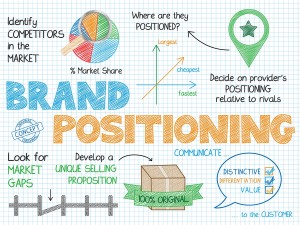
So how does a positioning statement come to fruition? Ries provides a great example when discussing working with Uniroyal on their first pass at a positioning statement. In his example, he discusses how the team made the unified choice to position the brand as the “technology leader in the rubber industry.” He then points out how the brand needed to convince the consumer of the validity of this statement, answering questions such as how does Uniroyal back up its claim as the leader in the space and how is leadership measured, while imploring the team to provide concrete reasoning to support the statement.
The goal of what Ries was doing was to let the Uniroyal brand team know that on its own, the statement wasn’t strong enough or believable enough to be the “rock” of the brand.. The concept was there, but it needed something credible, unique and stronger than what every other competitor was saying. Using facts to support their next positioning statement, Uniroyal showed their differentiation and outlined how they stood apart from the competition: “Uniroyal holds more patents than any other rubber company.” Simple, concise and clear, and allowing for the consumer to connect the dots between their “best of” statement and their leadership claim.
So the next time you are searching for that perfect, solid positioning statement and feel like you are hitting your head on a rock, focus on finding the words and statements that sum up that big idea. Then, explain what that big idea has to offer and what makes it different from the competition. In doing so, you can ensure that your positioning statement is the cornerstone for your next big idea that turns into your brand, and then ultimately become the center for all your sales and marketing efforts.
Image Sources:
Image 1
Image 2


